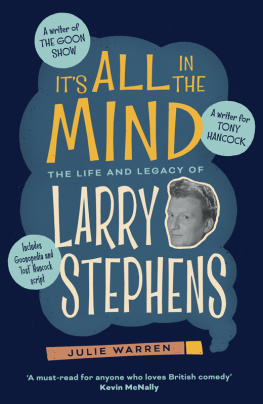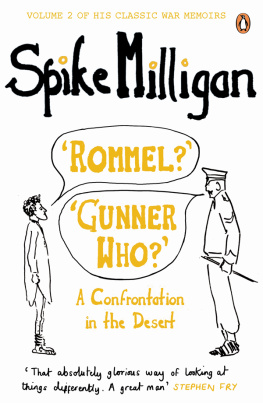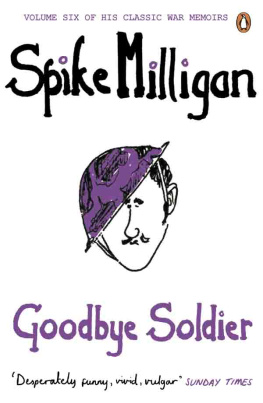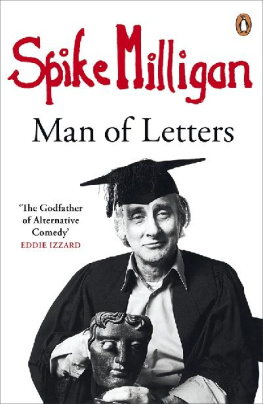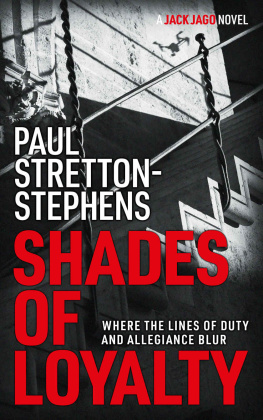
In memory of Mike Brown
Dedicated to
Arthur Baseley (5 Commando)
Svend Aage Lindhardt Boll (Danish Commando)
James Brown, MM (5 Commando)
Mick Collins (5 Commando)
Ronald Davies (5 Commando)
Robert Donnison (5 Commando)
Arthur Raymond Green (3 Commando)
G. F. Harris, Geordie Lad (4 Commando)
John Chips Heron, MC (5 Commando)
Ken Humphries (5 Commando)
Ken McAllister (2 Commando)
Joe Rogers, MM (2 Commando)
and all their Second World War commando comrades
United We Conquer
Contents
Authors Note
My grandmother used to talk to me about all sorts of things: about sleeping with her hair tied in rags so she would wake up with curls; about Cromwell tethering his horse at the local church (Thomas or Oliver? I can no longer remember); and about her nephew, Larry Stephens. Had I known that thirty-plus years later, Larry would become such an important part of my life, not only would I have paid more attention to my grandmother but I would have made copious notes too.
When I started trying to find out more about Larry in 2010, all the people who had known him when he was a child were dead and very few of those who served with him during the war were still around. I often had to rely on archives and anecdotes, photos and handed-down family memories.
Much of Larrys personal archive was thrown away a few years after his death and at certain times he didnt leave much of a mark on the records just a bit of a smudge so although it is possible to make assumptions about some things, there are a few gaps in his life. As time passes and more archives are opened up and digitised, it may be possible to fill in some of these gaps but we may never find out the full story of Larrys life, work and influence.
What follows is everything we do know about the dramatic life of this remarkable man.
London, January 1959
Larrys head hit the table in a clatter of plates and cutlery. The cigarette slipped from between his fingers onto the floor and the red wine from his toppled glass bloomed across the tablecloth. The knives and forks of the other diners paused above their meals as they glanced over in disapproval at the noise.
Larry Stephens died conveniently; it was very nice of him.
Part One
GLARNIES
QUINTON AND HINTON
1
The Histories of Silas the Elder
They built the west wing of their ancestral home in 1883, the east wing was completed the following year and the year after that it flew away.
Conversation between Larry Stephens and Tony Hancock
Family legend tells that Larry Stephens great-great-grandfather was somewhat partial to sampling the finished product from his brewery, and by the time he died the barrels and coffers were both dry. It is said that all he had left to bequeath was a drinking glass for each of his seven daughters and a killer financial hangover for his five sons. Had the great-great been teetotal, Larry might well have been remembered today as a member of an illustrious brewing family with a name as familiar as that of Guinness or Boddington.
The great-great-grandfather, Silas Stokes, was born in Wednesbury, Staffordshire in 1812 and was full of entrepreneurial spirit as well as alcoholic spirits. He settled in the Lyng area of West Bromwich and owned land and property in Paradise and Pleasant Streets. He was listed in various business directories as a coach smith and a railway carriage iron-work manufacturer but he soon found another way of making money.
The Beerhouse Act had made it possible for anyone to buy a licence to brew and sell beer and Silas created a public house called the Smiths Arms in his property in Pleasant Street. The Smiths Arms was a mere hops throw away from Spon Lane, a thoroughfare renowned for the number of pubs along its length. In the second half of the nineteenth century, there were at least twenty-seven of them in operation in the lane at the same time and Hitchmoughs Black Country Pubs lists more than thirty of these former watering-holes, none of which remain.
Silas seems to have broken the terms of his beer licence on a regular basis generally by keeping his house open during illegal hours and popped up in newspaper court reports from time to time, paying the associated fines.
Silas died in 1873 at the age of sixty-one, leaving more money than family legend would have you believe. His estate was valued at somewhere between 50 and 100 equivalent to as much as 50,000 in 2017 and most of it went to his widow, Phebe, with the exception of his horse and cart, which he instructed should be passed to his youngest son as soon as he reached the age of twenty-one, and the seven drinking glasses for seven daughters, which continue to be passed down through the female line and sit quietly on the shelves of each successive generation.
Larrys grandfather, John Stephens, was born the year Silas died, one of nine children produced by Silass daughter, Phoebe, and her husband, Hezekiah Stephens. The entrepreneurial spirit began to be smelted and polished away. Hezekiah and his sons worked in foundries or spring-making firms while his five daughters went into service. Silass business interests became transformed through family lore. The horse and cart was now a chaise and four, the pub in Pleasant Street a vast brewing empire in London. Despite their inaccuracy, John must have found these tales of past glories inspirational as within two years of moving into 46 Florence Road, West Bromwich, with his new bride, the gentle Honor, John had abandoned his job as a spring-maker and converted the dwelling house into a grocers store with living quarters. Larrys father, Albert, was the couples first child and he was followed by Doris, Ivy, Frank, Edna and Dennis.
John Stephens was a Wesleyan Methodist, intensely religious and strictly teetotal. Hymns were sung in the Stephens household every evening to the accompaniment of a huge reed organ which took up the whole of one wall in the parlour. The children had to take it in turns to pump the organs bellows and also to read Bible passages aloud. There were two visits to the Wesleyan Chapel Sunday School in Beeches Road each week and from 1901 John began teaching there.
As they grew older, the children were given a halfpenny a week each as pocket money but only on condition that they spent it in their fathers shop. Doris, the eldest daughter, supplemented their supplies by crawling along the shop floor behind the counter, out of sight of their father, so that she could steal liquorice to be shared among the siblings.
At the time of the 1911 census, Larrys father, Albert, now aged sixteen, was working in the chemical industry as an office clerk but in his spare time he taught himself shorthand and went to night school to further his education. But the outbreak of the First World War put a stop to Alberts personal development programme. He served in France with the Royal Army Ordnance Corps, initially on attachment to the South Staffordshire Regiment as a Lance Corporal and later on a temporary commission as a Second Lieutenant with the East Surrey Regiment.
While Albert was away, his family became extremely influential at the Sunday School and by 1921 his father, John, was the superintendent, his brother, Frank, the assistant secretary and his sisters, teachers. Alberts time was spent on less spiritual matters though; he had fallen in love and become engaged to a girl who lived around the corner in Mary Road and he was now working as a solicitors cashier, saving as much of his income as he could before embarking on married life.
Next page
